Blackcurrant / Summer / Edible
An easy to identify member of the Gooseberry family with edible fruits. It’s a medium-sized shrub, growing up to 1.5m tall.
Common Names
Blackcurrant, Cassis
Botanical Name
Ribes nigrum
Scientific Classification
Kingdom – Plantae
Order – Saxifragales
Family – Grossulariaceae
Physical Characteristics for Blackcurrant
Leaves
The leaves are palmate, with 3-5 lobes and they are bluntly toothed. Their upper surface is hairless, the undersides is hairy. The leaves smell strongly of Blackcurrants when they are crushed.
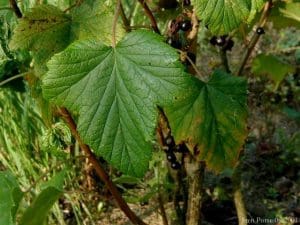
Flowers
The flowers are quite unremarkable, they are small, reddish to green in colour and grow on hanging racemes, called strigs. Each strigs may have up to 20 flowers. The flowers open in succession from the base upwards. The plant normally flowers between April and May.
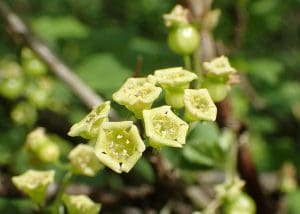
Fruit
The flowers develop into dark purple to black, shiny berries. Up to 20 berries grow on each racemes causing them to droop down. Individually the berries are about 10mm in diameter. The berries normally appear from July to August. An established bush can produce up to 10kg of fruit per year!
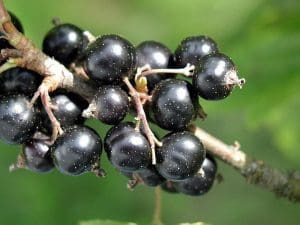
Habitat
Blackcurrants are a non-native species, originally they come from Sweden and Norway. They are found in the wild in the UK but they are less common than Redcurrants (Ribes rubrum). Most often we find them in damp woodlands, hedgerows and river banks where they have naturalised.
Known Hazards
None Known
Could be Confused with…
They could be confused with other Ribes species for example Redcurrant (Ribes rubrum) which looks very similar when the fruits aren’t present. The main difference is the scent of the leaves, when crushed Blackcurrant leaves smells like Blackcurrants or Ribena whereas Redcurrant leaves smell ‘green’ or herbal.
The Guelder Rose (Viburnum opulus) could also look similar, typically Guelder Rose is a larger plant, its berries grow in bunches rather than on racemes. Guelder Rose berries has a strange smell a bit like a wet dog. The berries are edible but they need to be cooked first.
Edible Uses
They can be eaten raw or cooked, they have a lovely sharp flavour that we are all familiar with. They are high in pectin so are great for jams and jellies. Their flavour works well in savoury dishes too.
Beverages are often made from the berries for example, Crème de cassis, a French Blackcurrant liquor that’s typically serve with champagne to make a Kir Royale.
We are all familiar with Ribena, the blackcurrant cordial. 95% of the Blackcurrants grown commercially in the UK go into this drink. Ribena was launched in 1938 and because blackcurrants have a high vitamin C content, free Ribena was given to children during the Second World War when fruit such as oranges became hard to get.
Notes on Herbal Uses
All parts of the plant have been used traditionally in herbal medicine.
The leaves have antimicrobial, anti-inflammatory, antiviral, antiseptic and anticancer properties. They make a really tasty and health tea.
Blackcurrant seed oil contains gamma-linolenic acid (GLA), a type of omega-6 fatty acid that’s been said to help ease inflammation in the body.
The berries are a great source of Vitamin C, Vitamin B, Vitamin E, Calcium, Iron, Magnesium, Manganese, Phosphorous, Potassium, Sodium, Zinc, Water, Fat, Carbohydrates, Protein and Fat.
Extra notes from the Foragers
Blackcurrants have been used a lot in the past in the textile industry, a yellow dye is obtained from the leaves and a black or purple dye from the berries.
References:
https://congletonbhpg.co.uk/our-plants/blackcurrant/
more from the foundation of this fruit



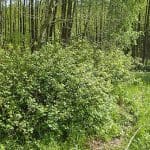
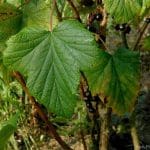
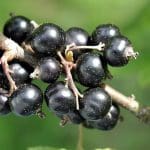
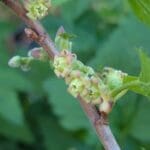
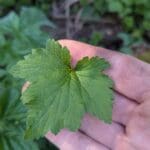
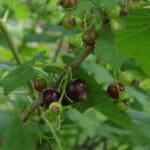



Leave a Reply
You must be logged in to post a comment.